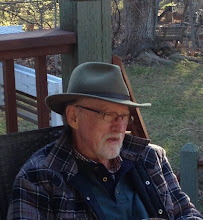Ironies
And was Mike (identified by that same Times-Colonist in an earlier edition as a member of the Oak Bay NDP Constituency Association and member of the BCNDP Provincial Council) carrying a placard denouncing VanderZalm's notorious libertarian and social conservative views?
Was he hell! He was there in his capacity as one of the lead organizers of the recall campaign.
Should that campaign succeed the politics of BC will almost certainly never be normal again. And should Ida be replaced by an NDPer in a future NDP government (there are precedents: her predecessor was, after all, Elizabeth Cull, NDP!) guess who will be the first target in the recall campaign that will follow just as soon as the government is forced to raise taxes to implement even a small part of their electoral platform.
Welcome to the Tea Party, BC version.
I sincerely hope they're not successful.
*****
In the November, 2005 convention Carole James promoted a change to the BCNDP constitution that reduced the influence of unions on the party. Although this upset many of our members, she was ultimately successful, and this change, among other initiatives, allowed her to try to mend fences with the small business community, so critical for developing new employment.
All the evidence is that she made some headway, and it is undeniably true that the BCNDP became a less dogmatic, more electable party as a result.
Then the party elected Moe Sihota as its president. He negotiated a secret deal with various union organizations to provide him with a salary so that he could do justice to the job. This fact was, of course, revealed. The press loved it.
And there went all our credibility on that file.
Personally, I have no problem paying for the president; in fact, I'm astonished that that we haven't done so all along. But there's a difference between the party paying someone to do a job and having unions pay him under the table to do it, and I'm astonished that apparently nobody realized this could undermine the leader and shoot us in the foot electorally.
Bullies
For me the first real inkling that she would not be living up to the image I had formed of her was when she wouldn't accept any responsibility for the events leading to her resignation, and instead complained about the "bullies" who opposed her.
That's an interesting term for her to use, echoing as it did Bill Bennett's criticism of Gordon Campbell. But Claire Trevena and Lana Popham bullies, just like Gordon Campbell? No, Carole: that's just offensive and illogical!
As a public school teacher I have seen and dealt with more than my share of bullies and their victims. In every case the perpetrators felt contempt for the powerless and immune from consequences. So who kicked Bob Simpson out of Caucus without apparently consulting anyone? Whose supporters attempted to bludgeon the dissidents into line by publicly outing them at the Council meeting? Whose camp prevented the Council from even debating the issues that were at the basis of the disagreement? Who escalated the threats of force, and wouldn't bend at all when the dissidents tried mediation?
If there is a bully in this case it's not the people who were forced to band together to speak to power.






















































